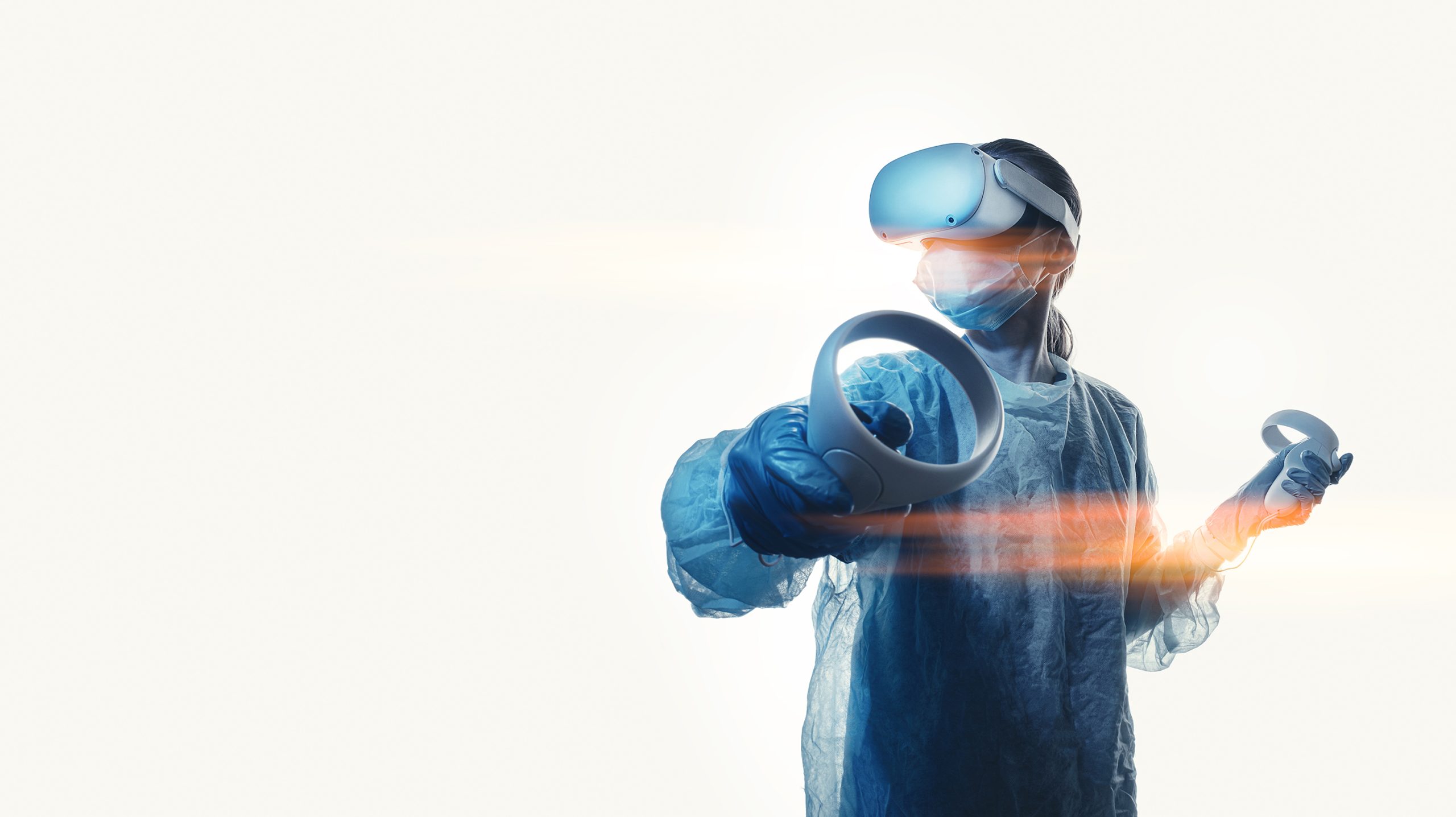The COVID-19 pandemic has taken a serious toll on physicians, with over half reporting burn out as a result of no work-life balance. Medical students also experienced hardships such as reduced hands-on training which greatly impacted their education. The team at Luxsonic Technologies, led by Dr. Mike Wesolowski in Saskatoon, is working to combat these challenging experiences through the power of virtual reality (VR). The Luxsonic VR platform, SieVRt, provides advanced medical imaging visualization tools in an easy-to-use, portable, and accessible solution.
PROMOTING WORK-LIFE BALANCE AND COLLABORATION WITH VIRTUAL REALITY
SieVRt is available for use on widely available enterprise grade VR headsets. Using SieVRt, physicians can review and annotate patient data within a virtual reading room from anywhere. When immersed in the virtual reading room, physicians report that they are more focused and less distracted compared to when they are using traditional 2D software. While VR can be a sequestering experience, SieVRt has built-in collaboration tools that allow multiple physicians to interact with and securely share the same virtual reading room and imaging data simultaneously. This collaborative learning environment has enormous untapped potential for educating the next generation of physicians.
TRANSFORMING MEDICAL EDUCATION
Today, in-person medical training is costly. Medical education is also highly clustered, requiring many students to relocate. With SieVRt, students can get hands-on experience and instruction from wherever they are.
In research trials of SieVRt, participants reported that they:
- Preferred learning in VR over web conference and traditional e-learning,
- Were more engaged with the content, and
- Performed better on assessments after learning in SieVRt.
With VR medical learning tools like SieVRt, students can access self-learning resources as frequently as they wish. SieVRt also allows for students to connect with each other and their professors in real time for group learning. It is critical that students feel confident with their skills and medical understanding. But, SieVRt isn’t just great for students; it’s also a cost-effective solution for educational institutions. At scale, SieVRt is half the costs of traditional in person training.
BUILDING ON SIEVRT TO IMPROVE PATIENT CARE
Through the INOVAIT Focus Fund, Dr. Wesolowski and his team are working to incorporate a machine learning component into SieVRt. Through this, physicians will be able to transform raw imaging data into a fully segmented volume within a few minutes and then use this volume to plan the best medical intervention with virtual surgical and radiation therapy tools. This has enormous implications on patient care and prognosis as physicians can determine the most effective form of treatment straight from their headsets.
The future of medical care rests on solutions that will support physicians and students in honing their skills, while also allowing for better working conditions. SieVRt is proving to be one of those solutions. As VR headsets continue to become more ergonomic and as complementary devices such as haptic feedback devices improve, the accessibility of these solutions will continue to spread across healthcare settings. With these advancements underway, it is clear that VR will play a crucial role in shaping the future of medical care.
—-





